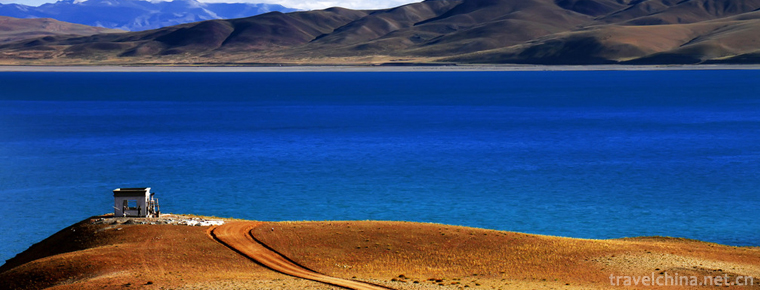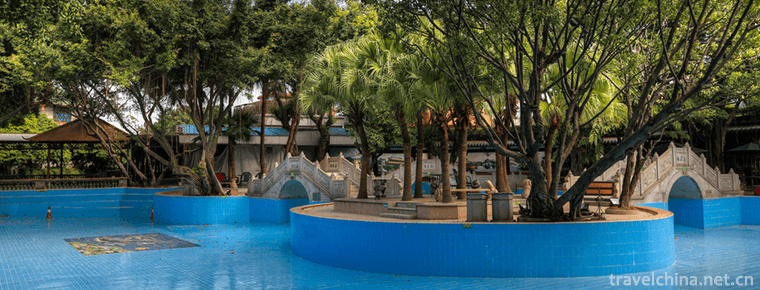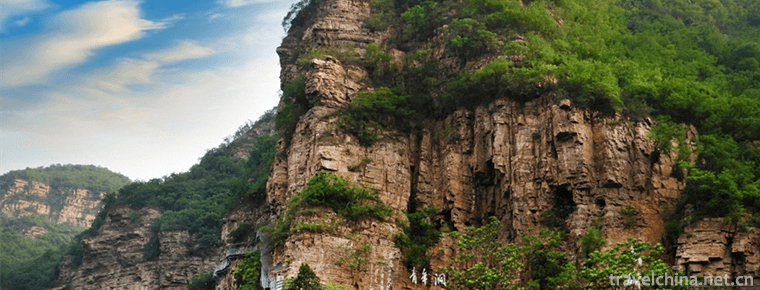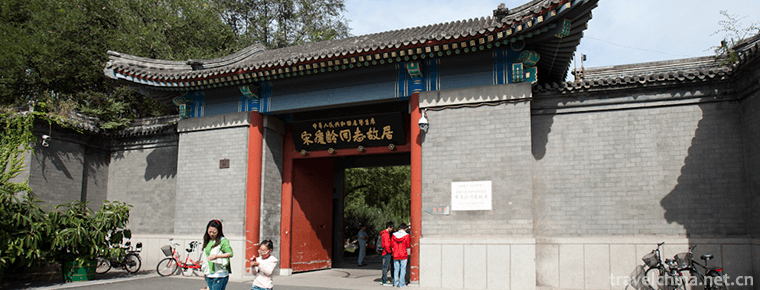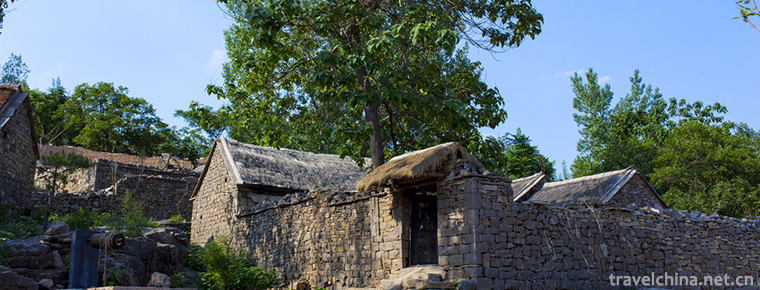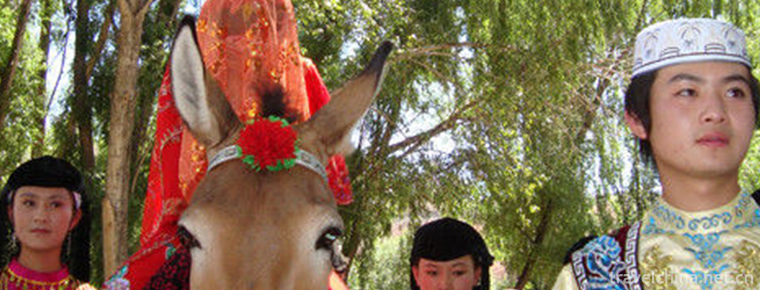Taierzhuang Ancient Town
Taierzhuang Ancient City, located at the center of the Beijing-Hangzhou Grand Canal, is located at the junction of Taierzhuang District, Zaozhuang City, Shandong Province, and the four provinces of Shandong, Jiangsu, Henan and Anhui. The ancient city began in Qin and Han Dynasty, developed in Tang and Song Dynasties, prospered in Ming and Qing Dynasties, and was known as "the first village in the world" (bestowed by Qianlong in Qing Dynasty). The ancient city covers an area of 2 square kilometers, 11 functional zones, 8 scenic spots and 29 scenic spots. It is the largest ancient city in China. As a national AAAAA-level tourist attraction, it has the reputation of "the most beautiful water town in China".
The ancient city of Taierzhuang is known by the World Tourism Organization as "the living ancient canal" and "the remaining heritage villages of the Beijing-Hangzhou Canal". The ancient city of Taierzhuang includes ancient rivers, ancient wharfs, Chinese ancient water city, Taierzhuang War Memorial Hall and cross-strait exchange base. It is the only two cities in the world that have been rebuilt as world cultural heritage due to the destruction of World War II artillery.
The first batch of national practical education bases for primary and secondary school students.
Ancient city origin
In the pre-Qin period, the territory belonged to Xu, Biyang and other countries. It was the disputed place of Wu, Yue, Lu, Song, Qi and Chu. Archaeological evidence shows that the old city of Biyang, more than two thousand years ago, is an ancient water city, which was listed as a national key cultural relic protection unit in 2006. During the Qin, Han, Wei and Jin Dynasties, the canal was divided into Fuyang and Lanling counties. Yongjia Nandu, Fuyang County merged into Luxian County, later renamed Shouzhang County. After the Eastern Wei Dynasty, the old land of Fu Yang belonged to Chengxian. Since the Sui Dynasty, Chengxian merged Lanling County, later known as Lanling County, Yizhou, Yixian.
In the Tang Dynasty, the Tai family established a village here, called Taijiazhuang. Located outside the North Gate, Zhuntige, built in the middle and late Tang Dynasty, is the oldest building in the history of Taierzhuang.
During the Northern Song Dynasty, Di Qing, Su Shi and others presided over the large-scale development of Liguo Iron Mine in Xuzhou (formerly known as Pengcheng). Taierzhuang's adjacent Zhaoshui began to take on the function of iron ore export. So far, it was called Penghe, commonly known as Yuntiehe, Xinhe and Zhonggou.
During the Wanli period of the Ming Dynasty, when the Beijing-Hangzhou Canal diverted from the Yellow River and passed through Taierzhuang, it borrowed Penghe Tongcao.
In the Yuan Dynasty, earthen dikes were first built. There were three imperial temples and Xuandi temples built in the city, which gradually formed a market town called "Taijiazhuang Collection".
At the end of Ming Dynasty, there were 2,000 households in Taijiazhuang. The name "Taierzhuang" was first found in the canal defense monument of Huanglingzhuang, southeast of Taierzhuang, on Yangzhou Road in 1639.
Due to the influence of the diversion of the Yellow River, the Beijing-Hangzhou Canal was once operated on the Yellow River from Xuzhou to Huai'an in the Yuan and Ming Dynasties. But the Yellow River often floods, which often hinders the water transport, so there is the so-called "Kaishukou River to the distant river regime" of the Kaishui Economic Transport Bill. In the fourth year of Longqing (1570), Weng Dali initiated Kaiquan, and in the twenty-eighth year of Wanli (1600), he formally played the Quartet. The following year, it was commissioned under the chairmanship of Liu Dongxing. After the thirty-eighth year of Wanli (1610 years), the Songhe River completely replaced the Yellow River and became the economic lifeline and golden waterway of the country.
Historically, the downstream water level of the Taierzhuang section of the canal is 21 meters lower than that of the Weishan Lake estuary, with a large drop and rapid flow. The water source mainly comes from the Weishan Lake. When the Sihe River opened, there were eight locks to control the flow. Among them, Taizhuang Lock is located on the South Canal of Taierzhuang. It is the first lock passed by a boat heading north to Beijing from Jiangsu to Shandong. The establishment of Taizhuang sluice has gathered a large number of people and logistics, provided opportunities for trade and commerce, promoted the rapid rise of Taierzhuang's social and economic, and developed into a strategic place to guard southern Shandong and Gongwei Xuzhou, and a drought and flood wharf to connect the north and south, where merchants and businessmen converge.
Taierzhuang was originally the residence of Wang Mu Shang She in Pengxiang, Yixian County. In the thirty-fourth year of the Ming Dynasty (1604), based on the need of the defense, maintenance and management of the Beijing-Hangzhou Canal in Taierzhuang section, Cao Shixuan, then governor of the river, invited him to set up posts, troops, patrols, Zenghe officials and public offices along the Taierzhuang section of the canal. Taierzhuang began to become a regional central city. In the Ming and Qing Dynasties, five-level river management institutions were set up in the reach, including the General River Court, Dongyandao, the Songhe Hall, Fuxun and Taizhuang sluice gates. In Taierzhuang, military organizations such as the Patrol and Inspection Department, Yizhou Town Bid Camp (later changed to Taizhuang Camp) and Taizhuang sluice floods were set up, with three-grade generals, five-grade guards, six-grade general judgements and seven-grade battalions. General, Zhengbapin County Ministers, Zhengbapin Foreign Commissioners, Zhengjiupin Inspection Envoy and other officials at all levels are stationed here.
Four years of Shunzhi Qing Dynasty (1647), Taierzhuang Tucheng was built and completed the next year. The city was built near the canal, 1.1 kilometers long in East and west, and 1 kilometers wide in North and south. Xianfeng seven years (1857), because of the old foundation new brick wall. At the bottom of the new city wall is a terrace, which is 4 meters high and is stacked on it. The wall inclines inward from bottom to top. The brick wall is built with adobe, and its upper width is nearly 3 meters. There are six gates: the East Gate says Yangsheng, the West Gate says Taicheng Old Zhi, the North Gate says Zhongzheng, the Small North Gate says Chengen Zhanlu, the South Gate says Huidiji, and the Small South Gate says Yingxiang. East, west, South and north gates have two doors each, about 7 meters high, with guard towers on them and corridors downwards, with large cars available. The moat is 9 meters away from the wall, 10 meters wide, 2 meters deep and 5.7 kilometers in circumference. On the eve of the war in Taierzhuang, there were 8 streets, 13 docks, 437 lanes, 5,000 families and 20,000 houses in the ancient city.
In 1938, during the Anti-Japanese War, because of the Taierzhuang War, the ancient city was reduced to ruins.
Reconstruction of ancient city
On May 22-24, 2006, the Zaozhuang Municipal People's Government participated in the seminar on the protection and Heritage Application of the Beijing-Hangzhou Grand Canal held in Hangzhou. Members of the delegation and representatives of 18 cities of six provinces (municipalities directly under the Central Government) along the canal adopted the Declaration on the Protection and Heritage Application of the Grand Canal in Hangzhou.
On April 8, 2008, in commemoration of the Seventieth Anniversary of the victory of the Taierzhuang War, the Zaozhuang Municipal People's Government officially announced that the reconstruction of the ancient city of Taierzhuang would be started. Thereafter, a special rescue and Protection Agency was set up to collect and sort out the materials in the early stage. A comprehensive and in-depth investigation has been made on the streets, wharfs, barges and buildings of the ancient city. All the existing historical relics and old buildings have been photographed, classified and preserved, and the eight architectural styles of European architecture, Hui architecture, northern architecture, Jiangsu and Zhejiang architecture, Shanxi and Shanxi, Guangdong, Guangxi and Fujian have been fully understood, and systematic photographs and characters have been formed. Information. Emphasis is laid on the investigation of Taishan Xinggong Temple, Wenchangge Pavilion, Xinguandi Temple, Sanguan Temple, Yuhuang Pavilion, Dawang Temple, Longwang Temple, Lvzu Temple, Old Guandi Temple, Fire Temple, Juntige Pavilion, Dongyue Tianqi Temple, Tiefu Temple, Cang Temple, 18Luohan Temple, North-South Mosque, Gaomiao Temple, Bawax Temple and Jiulong Temple. The architectural location, architectural style, architectural art and architectural layout have drawn some architectural plans. In the form of reading abstracts, online collection, on-site shooting and door-to-door collection, more than 500 reference pictures of water streets, ancient streets, ancient houses, ancient bridges, cruise ships, archways, ancient lights and other ancient city construction are collected and collated, and more than 20,000 words of written data are used to draw, collect and collate the ancient city water system, land, demolition, power supply, and so on. More than 20 related drawings, such as heating and water supply, were compiled and bound into volumes to provide basis and reference for the restoration and construction of the ancient canal city.
On December 17, 2009, with the approval of the Central Taiwan Office, the first cross-strait exchange base was established in the ancient city of Taierzhuang, and the inauguration conference and unveiling ceremony were held.
On May 1, 2010, Taierzhuang officially opened its city. On May 4, Lien Chan, the honorary chairman of the Taiwan Kuomintang, came to Taierzhuang to lay the foundation for the Renaissance Building.
On May 12, 2011, Wu Boxiong, honorary chairman of the Chinese Kuomintang of Taiwan, attended the opening ceremony of the ancient city of Taierzhuang. On June 19, Li Changchun, then the Standing Committee of the Political Bureau of the CPC Central Committee, inspected the ancient city of Taierzhuang. On September 10, the National Intangible Cultural Heritage Expo Park settled in the ancient city of Taierzhuang. On December 28, the ancient city of Taierzhuang was listed by the State Administration of Cultural Relics as the first National Cultural Heritage Park in China. On September 16, Jia Qinglin, then the Standing Committee of the Political Bureau of the CPC Central Committee and Chairman of the CPPCC National Committee, visited the ancient city of Taierzhuang.
On August 6, 2012, the State Copyright Administration decided to build a national copyright trading base in Taierzhuang, Zaozhuang City, Shandong Province. On November 22, Taierzhuang Ancient Town became a national 5A tourist attraction with the approval of the National Quality Grading Committee of Tourist Scenic Spots. On December 7, Cai Wu, Vice Minister of the Ministry of Propaganda and Culture, together with Sun Shougang, Standing Committee of the Provincial Committee and Minister of Propaganda, unveiled the National Cultural Industry Pilot Park of Taierzhuang Ancient City.
On May 15, 2013, Taierzhuang Ancient Town was approved as the Overseas Chinese Education Base of the State Council. On August 5, the old city reconstruction project was fully completed.
Famous scenery
Scenic spot
With the canal as the cultural axis, the framework of the ancient city has designed eight scenic spots: Guandi Temple scenic spot, Ximen Anlan scenic spot, Xuanfu Village scenic spot, Canal Street scenic spot, Banqiao-Huamen Tower scenic spot, Shuijie commercial scenic spot, Mosque-Jiulongkou scenic spot and Wetland Park. Corresponding to "Jiushui Huichuan, Taicheng Old Records, Tucun Green Shade, Miaowang Fuyu, Liuquan Wohong, Gubai Wangyue, Canal Market, Jiege Lingbo" and other eight scenic spots of the ancient canal city, 29 scenic spots such as the Senate General Office, Taishan Xinggong and Lanling Academy were planned and constructed. Combining the eight architectural styles of North Courtyard, South Shandong Residence, Hui-style Building, Watertown Building, South Fujian Architecture, European Architecture, Religious Architecture and Hakka Architecture, we will build the prosperous street with Hui-style Architecture as the main style, the T-shaped Street with European-style Architecture as the main style, the water street and water alley with Watertown Architecture as the main style, and the Jin merchan The main scenic spot of Guandi Temple.
Old town old scenic spot
It covers an area of 38155 square meters and a building area of 30295 square meters, accounting for about one tenth of the core area of the first phase of the ancient city. There are mainly Ming and Qing Dynasty buildings of different styles, such as Shengjiang Department, Tianhou Palace, Cuiping School Hall, Taizhuang Post, Rishengchangji, Wenhui Restaurant, Xieyuda Tea Shop, Fufeng Hall, Tianshuitang, Sangetang, Southern Shandong Residence, Southern Fujian Residence, Jiujie Hotel, Linshui Business Shop, etc.
An LAN men Scenic Area
The main scenic spots are Anlan Island, the old site of Ximen, Taierzhuang Museum of History and Culture, Shuimen, Ximen Bridge, Taierzhuang Battle Temporary Command Post, Buyunqiao, Guanyin Hall and inverted Guanyin Hall.
Guan Yu Temple Scenic Area
There are mainly temple Wang, monk's grave, Guandi temple, War Memorial plaza, Jinlong Dawang temple, Xiaonanmen, County submarine cultural museum, Wang Dexing number, ancient canal piers and other attractions and leisure catering places such as Hutianyuan.
Tai Fu Village Scenic Area
The main scenic spots of Xuanfu Village are Jiulong Temple, Chastity Archway, Xinglong Bridge, Xuanfu Village Folk Custom Courtyard, South Mosque, Shentai, Ancient Sluice Gate, Tuyuan and a hot spring resort hotel.
North City River Scenic Area
The urban wetland park, featuring all kinds of wetland plants in Jiangbei Waterfront, has nine connected Wangtang and is connected with the moat. The main scenic spots are Lotus Lake, Shuilianwang, Luhuadang, Zhilanting, Yingweize, Linghuapu, Shuicang Beach, rice fragrance and other characteristic wetland landscapes, as well as Taohuawu, Yangliu Bank, Xinghuadu, Metasequoia embankment, Quanti Pavilion, Qingliangan, Youjiabu, Zhongzhengmen, Taishan Hanggong and other coastal attractions and service areas.
Hua men Lou Scenic Area
A recreational scenic spot featuring Wang Tang's traditional garden landscapes such as Banqiao Wang and Huamen Tower, the main attractions are Banqiao, Huamen Tower, Wanshuiqiao, Lanling Academy, Taierzhuang Water Culture and Art Museum, the old site of Lanling County Government, the site of the Great War Munition Wall, Xiaoshishashui Street Market in Huamen Tower, etc.
Canal market Scenic Area
A scenic spot featuring leisure and scenic sightseeing along the canal is mainly Tianhou Palace and Plaza Square, Noise Plaza, Hujiayuan, Yujia Wharf, Taierzhuang Gate Site Park, Shuangxiang Wharf, Wanggong Bridge Wharf, Taishan Hall Private School, Taierzhuang Grand Canal History and Culture Exhibition Hall, Zhonghe Hall, Dehe Xiang, Da Xiang. Battle Site Park and other scenic spots.
Shui Shang Street scenic spot
A traditional shopping mall as the theme scenic spot, there are mainly 10,000 courtyards, Zhao courtyard, Wujia Ticket, Xinhe Street, Wang Lou Street and other commercial markets, Tianhou Palace Wharf, Fuxing Building, Xiaojiazhou and other scenic spots.
Ancient city honor
On October 23, 2010, Taierzhuang Ancient City won the top honor of "Top Ten Scenic Spots" in Shandong Branch of the 2010 China Tourism General Evaluation List.
On November 18, 2010, Taierzhuang Ancient Town won two awards in the first China Leisure Innovation Award, namely "Innovation Award for Tourism Scenic Spots" and "Innovation Award for Leisure and Tourism Planning and Design".
On January 13, 2011, the Qilu Evening News, the Provincial Tourism Bureau and the Qilu Cultural Research Center jointly sponsored the "New Landmark of Qilu Culture", and 10 projects, such as Taierzhuang Ancient City, were awarded the "Ten New Landmarks of Qilu Culture".
On August 3, 2011, it was included in the "Top Ten Potential Ancient Cities in China".
On June 24, 2012, he was awarded the "CICE Golden Wisdom Award" for Top Ten Copyright Enterprises.
On December 1, 2012, "Shandong Branch of the 2012 China Tourism General Assessment List" was announced. Taierzhuang Ancient City was awarded the honorary title of "Top Ten Tourism Scenic Spots in Shandong Province".
In May 2013, Taierzhuang Ancient Town was named "China's Four Most Beautiful Watertowns" by CNN. The reason for recommendation is: "Taierzhuang is the site of the key battles in the Second World War.
November 2017, won the second Boao International Tourism Communication Forum 2017 Wenlu Town.
Tourism information
traffic
Aviation: Zaozhuang
It is surrounded by Linyi Airport, Xuzhou Guanyin Airport, Baita Port Airport of Lianyungang, Qufu Airport of Jinan, Yaoqiang International Airport of Jinan and Liuting International Airport of Qingdao. The distance from the ancient city of Taierzhuang is 90 km, 110 km, 130 km, 280 km and 370 km, respectively.
High-speed railway: Beijing-Shanghai high-speed railway, Beijing, Shanghai to Zaozhuang traffic time is 2.5-3 hours; Changsha, Wuhan, Qingdao to Zaozhuang 6 hours, 4 hours, 4 hours, respectively.
Train: Zaozhuang and its surroundings are Zaozhuang Station, Xuzhou Station, Pizhou Railway Station and Linyi Railway Station. The distance between Zaozhuang and Taierzhuang is 50 kilometers, 73 kilometers, 48 kilometers and 80 kilometers, respectively.
BRT Bus Rapid Transit: Take the BRT Bus B10 Line of Zaozhuang High-speed Railway Station (about 90 minutes'journey) to the ancient city of Taierzhuang.
Zaozhuang West Railway Station takes Line B1, and the East Suburb Passenger Transport Center takes B2 (about 50 minutes'journey) to the ancient city of Taierzhuang.
Self-driving tour: Beijing-Fujian Expressway North (or south), under the exit of Zaozhuang Section (Hanzhuang/Taierzhuang), straight east, take a special tourist line (journey of about 25 kilometers), directly to the ancient city of Taierzhuang. Beijing-Fuzhou Expressway goes north (or south) to the exit of Zaozhuang (Linyi Tangzhuang), then goes to Zaozhuang Bus Station, then passes through 10,000 Mu pomegranate garden along National Highway 206, and then reaches the ancient city of Taierzhuang. Under the exit of Taierzhuang, Zao Linlin Expressway travels eastward (or westward) and southward, along the Zao Tai Line (about 15 kilometers) to the ancient city of Taierzhuang.
line
Ancient city of painted boats
Ticket Price: Roundtrip 30/seat
(1) Qingyuyuan Pier-Memorial Pier-Ximen Pier
(2) Search for the Ancient Bank: Ximen Wharf-Luojia Wharf-Ximen Wharf
Locke Wharf-Simon Wharf
Night cruise ancient canal
Cruise Route: Ximen Wharf - War Memorial Hall - He Jingzhi Literature Museum - Li Zongren Historical Materials Museum (Return) - Wuxing Wharf - Shuimen Wharf - Wanjia Wharf - Zhaojia Wharf - Tianhou Palace Wharf - Shuguan Wharf - Yujia Wharf - Xiaonanmen Wharf (Return) - Ximen Wharf
Upper reaches of the water
Enjoy the scenery of the ancient city, the ancient revetment and the ancient wharf from close distance in the whole ancient canal
Route: Yacht Wharf - Fuxing Square Wharf - Wanggong Bridge Wharf
Sightseeing bus tour
Enjoy the beauty of the ancient canal
Route: BRT Parking lot - He Jingzhi Literature Museum - Taierzhuang War Memorial Hall - West Gate of Taierzhuang Ancient City
















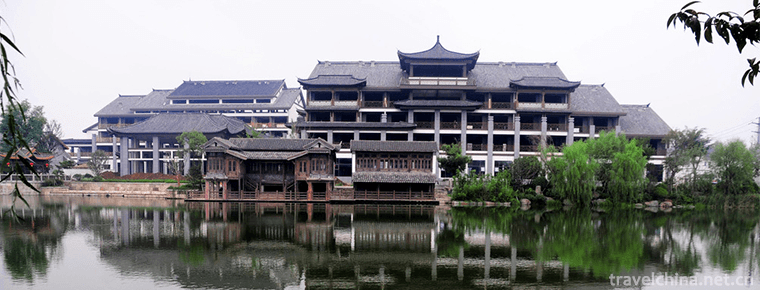
-
Bao Mo yuan
Baomo Garden is located in Zini Village, Shawan Town, Panyu District, Guangzhou City, Guangdong Province. It was built in the late Qing Dynasty and covers an area of five mu.
Views: 156 Time 2019-01-02 -
Red Flag Canal Scenic Area
Red Flag Canal Scenic Area is a national AAAAA class scenic area, covering an area of five square kilometers. Red Flag Canal Scenic Area is composed of Red Flag .
Views: 404 Time 2019-01-16 -
Memorial of Song Qinglings Former Residence in Shanghai
Song Qingling's former residence in Shanghai is the place where Song Qingling lived and lived for a long time. Qingling came to live here in the spring of 1949 and ushered in the liberation of Shangha.
Views: 154 Time 2019-02-13 -
Yimeng Red Film and Television Base
Yimeng Red Film and Television Base, located in Changshan Villa, Ma Muchi Township, Yinan County, Linyi City, Shandong Province, was built in 2009. It is a comprehensive tourist area.
Views: 164 Time 2019-03-03 -
Pearl rice paste
Pearl rice paste is a delicacy. The main raw material of this dish is fresh pearl rice. The main condiment of this dish is sugar. This dish is mainly made by boiling..
Views: 296 Time 2019-03-23 -
Salar Wedding
Salar wedding ceremony is one of the most important ceremonial activities in Salar people's life etiquette. Salar traditional wedding ceremony is held in the midwinter of each year. From engagement to.
Views: 120 Time 2019-06-11 -
Western Qin Opera
Western Qin opera, also known as "chaotic play", is popular in Haifeng, Lufeng, Chaoshan, southern Fujian and Taiwan. Western Qin Opera flowed into Hailufeng in the northwest of the Ming Dyn.
Views: 115 Time 2019-07-01 -
Yuhang Rolling Lamp
Yuhang Rolling Lamp is a kind of Han folk dance which combines athletics, martial arts and dance. It is made of bamboo pieces of large sphere as the main props, in the center of the sphere of bamboo k.
Views: 148 Time 2019-07-14 -
Sichuan University of Arts and Science
Sichuan Academy of Arts and Sciences, located in Dazhou City, Eastern Sichuan Province, has a history of running higher education which can be traced back to Longshan Academy in late Qing Dynasty, whi.
Views: 145 Time 2019-08-31 -
Anhui University Of Science & Technology(aust)
Anhui University Of Science And Technology is located in Anhui province. Huainan City Yes. Anhui higher education revitalization program Local characteristics High level University Construction, proje.
Views: 550 Time 2019-10-10 -
Seven Star Mountain tower
The Seven Star Mountain tower, commonly known as the black tower, was built in the Jiajing period of the Ming Dynasty (1522-1566). It is the brother tower of Dongshan white tower. It is on a peak of Qixing mountain in Taba village, Nanguang Town.
Views: 374 Time 2020-10-16
